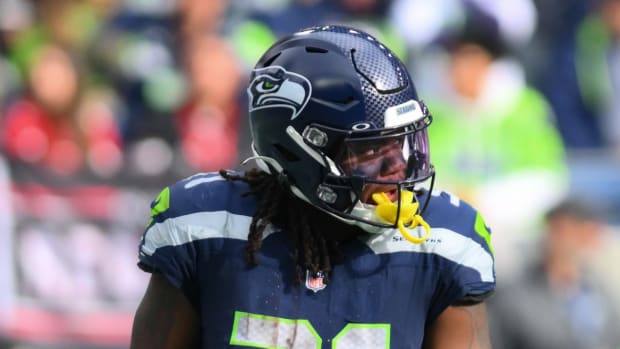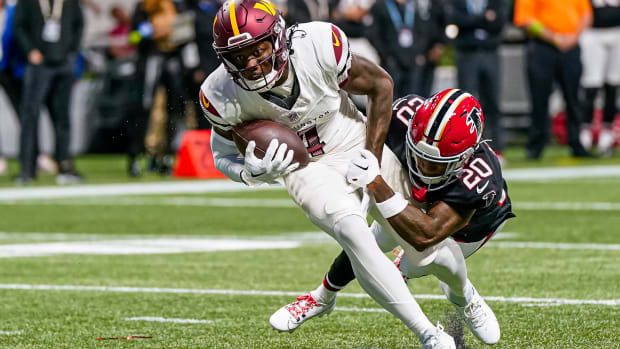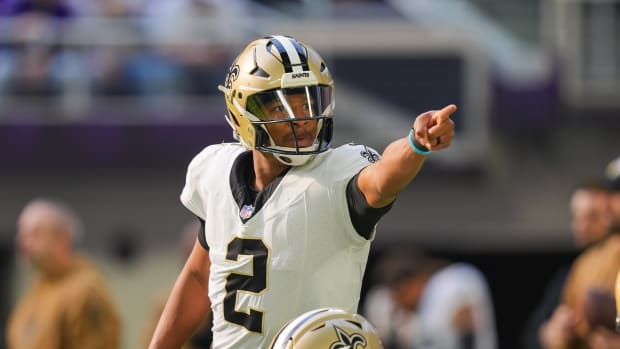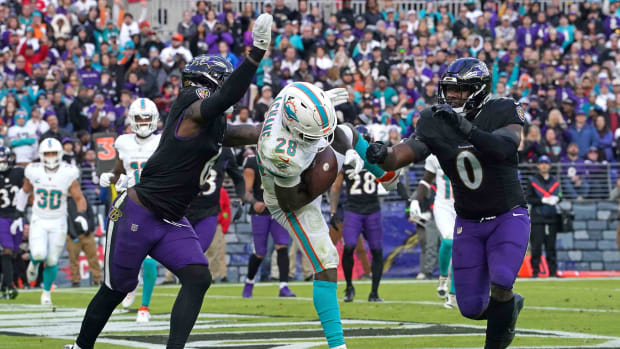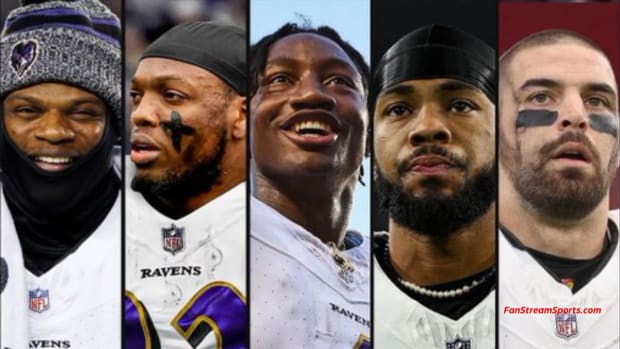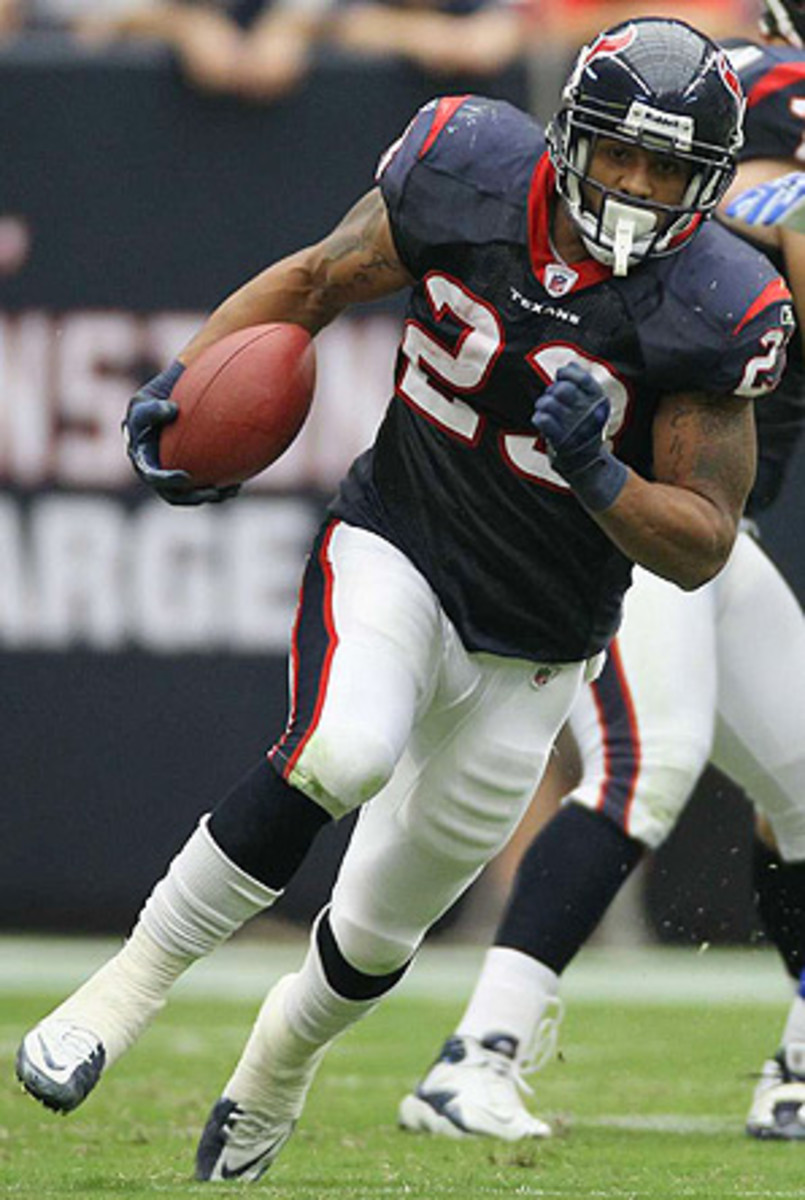
Running backs diminish in value, as 2011 draft's first round will show
And so it has come to this regarding the state of running backs in the first round of the NFL draft: While there seems to be a growing debate whether former Heisman winner Mark Ingram of Alabama or Illinois' Mikel Leshoure will be the first rusher selected, maybe the more pertinent question is whether this year's first round will come and go without at least two running backs being selected -- something that hasn't happened since 1963.
That's right, 1963*. During the Kennedy administration. That's the last time the NFL didn't feature a minimum of a couple first-round runners (none were selected that year), and back then the league was comprised of just 14 teams rather than the current 32. Forty-eight years later, we could see history repeat itself, prompting the obvious question: What in the name of John David Crow is going on here?
Be it a recent rash of injury-prone or ineffective first-round rushers, the NFL's ever-increasing dependence on the passing game, or the rise of the two- or even three-man backfield platoon, running backs simply haven't been great first-round bets for a while now. At the very least, this year figures to be the first time since 2004 that a running back hasn't gone in the top 12 of the draft, reflecting the position's continued diminishing value in the eyes of draft decision-makers.
You can't blame NFL personnel men for reaching any other conclusion when you consider the following:
• Of the past six first-round running backs selected (three each in 2009 and 2010), we're still waiting for a breakthrough season from any of them. Last season's first-round rushers all struggled to stay healthy: Buffalo's C.J. Spiller, San Diego's Ryan Mathews and Detroit's Jahvid Best. And in the case of 2009's first-round draft class, injuries have also limited the production and impact of Denver's Knowshon Moreno, Indy's Donald Brown and Arizona's Chris Wells.
• The emergence of undrafted running backs like 2010 NFL rushing leader Arian Foster of Houston, LeGarrette Blount of Tampa Bay and Chris Ivory of New Orleans only underscores the reality that there are plenty of quality running backs beyond the first round. Why pay the likes of Reggie Bush, Laurence Maroney, Marshawn Lynch and Felix Jones first-round money when there are so many more productive talents available for cheap?
• Minnesota's Adrian Peterson in 2007 and Tennessee's Chris Johnson in 2008 are the most recent elite running backs to enter the league, and both have been well worth their first-round price tags. But for all their greatness, how much have they really made a bottom-line difference? Peterson and Johnson have helped produce just one playoff win for the Vikings and Titans in their seven combined seasons and are 1-3 in the postseason. And let's not forget, three of the past five Super Bowl champions -- the 2010 Packers, 2009 Saints and 2006 Colts -- were heavily passing dominated and ran almost as an afterthought. Little wonder running backs are losing ground in the first round.
"You'd have to say the second tier of running backs has been just as productive, or more so, than the first tier of running backs in recent years,'' one veteran NFL personnel man said this week. "You can get a Ray Rice [second round in 2008] or a Jamaal Charles [third round in 2008] and have them be as productive as Rashard Mendenhall [first round in 2008]. That's happened a lot lately.
"And you have to admit it's not a great draft for running backs this year. Teams are looking at other players. With the unusual amount of defensive players you have in this year's first round, it's a little skewed. That's where the players are on everyone's board. But teams are more patient when it comes to drafting running backs now, and it has been trending that way. Even if you really need one, you don't have to take one in the first round, because you can get them in the second round or later.''
As is the case with several other positions, namely at quarterback, the rise of the spread offense in the collegiate ranks has made it more difficult to accurately assess running backs for NFL potential, league sources told me. That has added a level of projection to shopping for runners in the first round, with some rushers putting skills sets on tape that don't always translate to the NFL game.
"A lot of the recent trend has to do with the level of specialization at both the NFL and the college level,'' said former Vikings running back Robert Smith, a 1993 first-round pick who is now a college football analyst for ESPN. "There are so many spread offenses in college that you might not even get a sense for a guy's pass-blocking, because it's a different kind of pass-blocking in the NFL.
"Even how they run the ball is different in the spread, out of so many passing sets instead of closer to the line in a traditional pro-set offense. It makes it difficult to project how those guys will transition into the league. There just aren't a whole lot of guys like Mark Ingram coming out of the college game, guys who have run and blocked out of a pro-set formation.''
Of the 11 running backs selected in the first round in the past three years, only four have posted seasons of at least 1,000 yards rushing: Johnson, Pittsburgh's Mendenhall, Carolina's Jonathan Stewart and Oakland's Darren McFadden. Johnson and Mendenhall are the only rushers with multiple 1,000-yard seasons, and all but Johnson have lost some playing time to injury issues. The physical demands of the position are necessitating that more teams switch to a multiple-back approach, and that leads to fewer and fewer rushers who operate in a clear-cut No. 1 role. Accordingly, teams have started to draft for complementary roles in the backfield, not lead backs.
"The grind of position is a factor in how you draft runners now,'' Smith said. "You almost have to have a number of backs, because the mantra of bigger, stronger, faster applies at every position in the league, and that makes the position that's ostensibly the most dangerous of all [running back] that much worse. With multiple backs, you're not going to have one back who becomes so much more prominent in the game plan.
"It's tough to imagine a guy running the ball now like Jamal Anderson once did for Atlanta. But things change. The game changes. Teams are going to do what they think they need to do to win ballgames. And if it's to spread people out, and run two or three running backs out there, that's what they're going to do.''
Miami is the most logical team to target a first-round running back this year. The No. 15 Dolphins are revamping a running game that formerly featured Ricky Williams and Ronnie Brown, but neither veteran is in their plans for 2011. I've had Ingram to Miami in all four of the mock drafts I've done so far, but there are some teams who are wary of the health of Ingram's left knee, which underwent arthroscopic surgery last summer and proved troublesome at times during his junior season of 2010.
"I know this much, when you watch Ingram's sophomore tape, he was a beast,'' the NFL club personnel man said. "But he was hurt a little bit last season. It's conceivable that some teams may like Leshoure over Ingram, but we don't have it that way. If you take Ingram, and you get the runner he was in 2009, you might be getting a real value. Because you've seen him do it and know what you're getting.''
Perhaps both Ingram and Leshoure will wind up cracking the first round and the draft's streak of having at least two running backs in the opening round will reach 48 years and counting. But would it surprise anyone if it didn't, given the recent history of the position in the NFL? Running backs in the first round are becoming one of the draft's more endangered species.

































